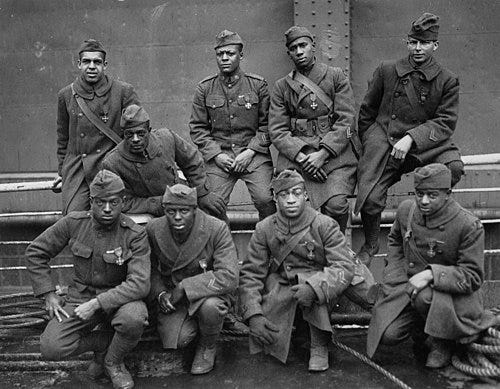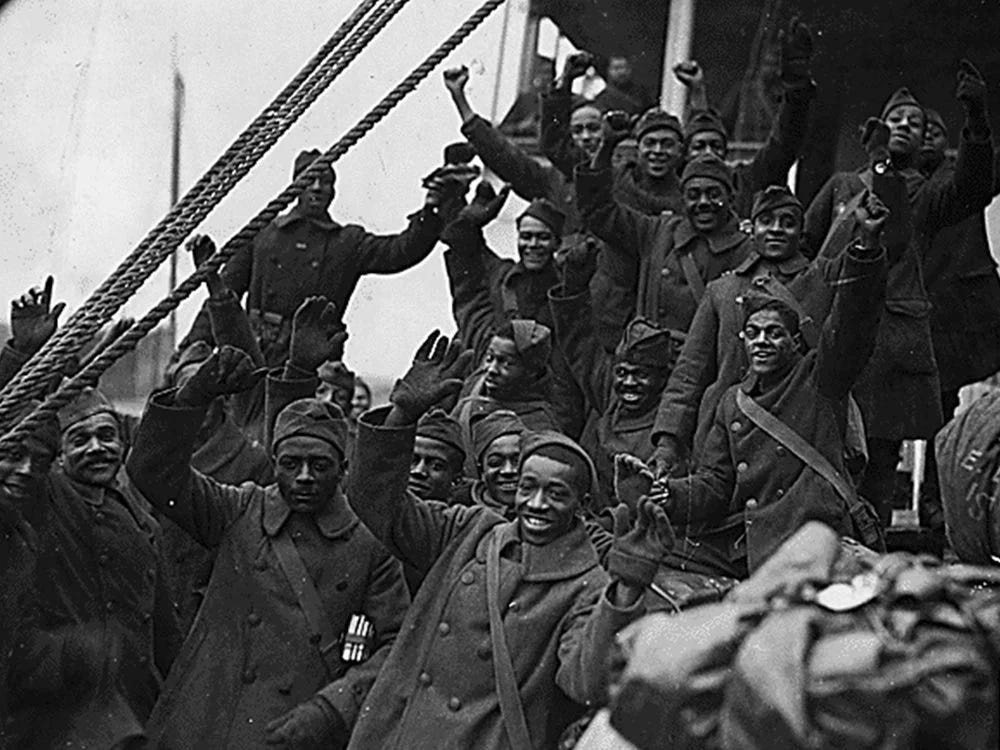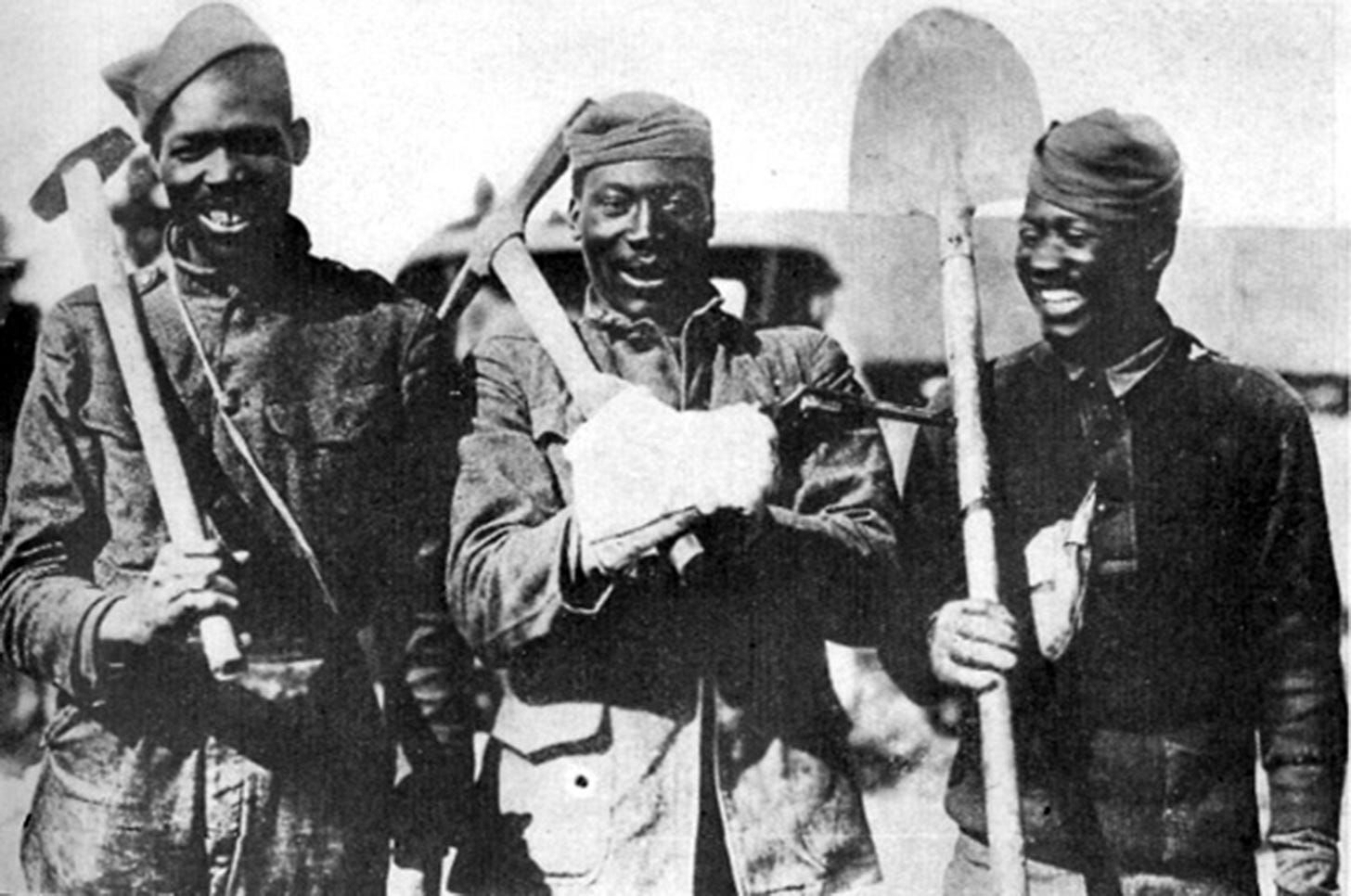Issue #130 American History September 6, 2022
No ads or annoying popups ever! So instead, please see the important information at the bottom of this post. Please keep those “Likes” and comments coming! Thanks!
One hundred eight years ago, the Great War, also known as World War I, began in 1914 when Archduke Franz Ferdinand of Austria was assassinated. War raged across Europe for four years, pitting the Central Powers (Germany, Austria-Hungary, Bulgaria, and the Ottoman Empire) against the Allied Powers (Great Britain, France, Russia, Italy, Romania, Canada, Japan, and the United States).
The United States did not enter the war until 1917, but by the time the Allied Powers declared victory on November 11 at 11:00 am in 1918, more than 16 million soldiers and citizens were dead. November 11 was formerly known as
Armistice Day because the armistice was reached on “the eleventh day of the eleventh month at the eleventh hour.” The holiday is now called Veterans Day.
A poem titled “In Flanders Fields,” published in 1915 by Canadian doctor Lieutenant Colonel John McCrae, described poppies growing in Flanders fields. This inspired the use of poppies as a symbol of remembrance on Veterans Day.
The losses by Germany and Austria are the primary reasons Hitler (an Austrian national) rose to power in the late 1920s and 1930s.
The results of the Russian Revolution in 1917, led by Vladimir Lenin and the Bolsheviks, and the Russian victory in WWI are the “ideal Russia” that Vladimir Putin wants Russia to be again.
Although then-President Woodrow Wilson wanted the United States to remain neutral while dealing economically with “both sides,” the increased sinking of commercial and passenger ships by German U-boats put enormous pressure on Wilson to enter the war to fight Germany.
In 1915, a U-boat sunk the British ocean liner the Lusitania which had hundreds of American passengers on board. Finally, in February 1917, Congress passed a $250 million arms appropriations bill to make the United States ready for war.
This was 52 years after the end of the Civil War, 49 years after the 14th Amendment granted citizenship and equal rights to African Americans and slaves freed by the 13th Amendment, and just 21 years after the Plessy vs Ferguson Supreme Court decision that enshrined “separate but equal” segregation into law in the United States.
The United States formally entered the war in April of 1917 and helped the Allies to declare victory by November 1918.
The Royal British Navy was able to maintain its superiority at sea after the Germans ended up mostly using their U-boats during the war.
On April 1, 1918, the British created the Royal Air Force or the RAF, the first Air Force recognized as a separate military branch.
More than 9 million soldiers and 10 million civilians died in World War I. Germany and France suffered the greatest number of casualties, having sent about 80 percent of their men aged 18-49 to war.
In addition, soldiers traveling to war and back home helped spread the 1918 influenza pandemic. The Spanish Flu, so named because Spain was the first country to identify it, is thought to have originated in a military hospital in Kansas in 1918. It was an H1N1-type virus with an avian source.
It is estimated that about 500 million people, about 1/3 of the world’s population at the time, became infected. About 50 million people worldwide died, including at least 675,000 in the United States. There was no flu vaccine and no antibiotics available at that time. (Currently, over a million people have died in the United States alone from the COVID-19 virus, even with vaccines and other medications.)
Black Soldiers in WWI
Black soldiers already had a record of exemplary military service in the Civil War as Buffalo Soldiers during the Westward Expansion and during the Spanish American War and the American Indian Wars.
When America entered the war, Britain, and especially France, asked for assistance and reinforcements. However, General John Pershing, Commander of the American Expeditionary Forces (AEF), declared that the United States military would fight in the war as Americans, not as part of another country’s military.
When World War I began, there were four all-Black military regiments in the United States: the 24th and 25th Infantry and the 9th and 10 Calvary. However, they were not at first deployed overseas for combat. Instead, African Americans who enlisted for military service were placed in the Services of Supply section of the American Expeditionary Forces, mostly as stevedores and other laborers. The main function of those working in these departments was to support and provide materials to other companies along the front.
In 1897, John Pershing was appointed as an instructor at West Point, in charge of Cadet Company A. He was considered very strict and therefore was very unpopular with the West Point Cadets. Because of his previous work with the all-Black 10th Calvary where he experienced firsthand the successful experiences of the Black soldiers (although he still considered them inferior to white soldiers), the West Point Cadets nicknamed Pershing “Nigger Jack.” Later, the name was softened to “Black Jack,” although the hostile intent remained the same. He was known as General John “Black Jack” Pershing for the rest of his life.
Despite his stance against having the American military stationed as mere reinforcements for other Allied forces, he finally relented and allowed the Black soldiers to be recruited into the French forces, where they were welcomed due to the positive experiences with the Senegalese French Colonial Army.
The Black soldiers from the 93rd Division, 369th regiment, were nicknamed the “Harlem Hellfighters” because the majority of the soldiers came from Harlem and other locations in the state of New York. They spent a total of 191 days on the front lines, longer than any other AEF regiment. France awarded the Harlem Hellfighters the Croix de Guerre for their heroism.

The 370th Infantry Regiment was given the name “Black Devils” by the Germans of the Central Powers. It was the only unit to be commanded by Black officers. Corporal Eddie Stowers, despite being seriously injured, led troops through a German line. He later died of his wounds. He was recommended for the Medal of Honor shortly after his death, but it was not processed and awarded until 1991.
In all, more than 350,000 African American soldiers served in World War I, and as usual, even though they served gallantly, they returned home to America to face the same discrimination, incidences of segregation, and lack of educational and career opportunities as existed before they left.
Despite their service, Black soldiers were rarely awarded any American medals of valor for decades, and most did not receive government assistance or pensions as the white soldiers were afforded.
Here is an excellent 6-minute video made by the History Channel about the Harlem Hellfighters.
Have you heard about the Harlem Hellfighters? Let us know in the comments!
Help us to grow!
“We Are Speaking” is a reader-supported publication. To receive new posts and podcast episodes and to support our work, consider becoming a free or paid subscriber. We publish 7 days/week and 28+ issues/month. You. can upgrade your free subscription to the paid level. It costs monthly and annual paid subscribers less than 35¢ an issue. Thank you!

Thank you for checking out some of the books and businesses of the TeamOwens313 Global Creative Community:
Detroit Stories Quarterly (DSQ) Afro-futurism Magazine
The Mayonnaise Murders: a fantasy mystery novel by Keith A. Owens
The Global CREATIVE Community (GCC) Facebook Group for Independent Writers and Creative and Solo Professionals
The Global Creative Community Brand and Marketing Academy: Training and Group Coaching for Independent Writers and Creative and Solo Professionals
Pam’s Branding and Marketing Articles for Independent Writers and Creative and Solo Professionals on LinkedIn
“We Are Speaking” is a reader-supported publication. To receive new posts and podcast episodes and to support our work, consider becoming a free or paid subscriber.





